Day 1 of a two day Private Tour. We were to spend the day in North Norfolk. It was forecast to rain all day today, particularly in the morning, but once again it was nowhere near as bad as predicted. We managed to successfully dodge the showers and even though the wind picked up in the afternoon we still saw some great birds.
Our first destination for the morning was Holkham. As we drove up towards the coast it was raining but by the time we got up to Lady Anne’s Drive it was already easing off. We had a look at the pools and fields by the road. There were plenty of ducks – lots of Wigeon plus Teal and a few Shoveler on the pools. A pair of Mistle Thrushes showed very well in the field next to the road and three Grey Partridge were feeding along the edge below one of the hedgerows.

After we had parked at the north end, we scanned the grazing marshes again. There were more ducks here, plus a few waders, mainly Common Redshanks plus a couple of Oystercatchers. We could see a stripy Common Snipe in the grass, looking less well camouflaged against the green vegetation here.
A white shape working its way along one of the ditches out in the fields was hidden by a bramble bush at first, but immediately looked big. When it finally came out into view, we could see its long, yellow, dagger-shaped bill and our suspicions were confirmed – it was a Great White Egret. A very nice bird to start the day with here.
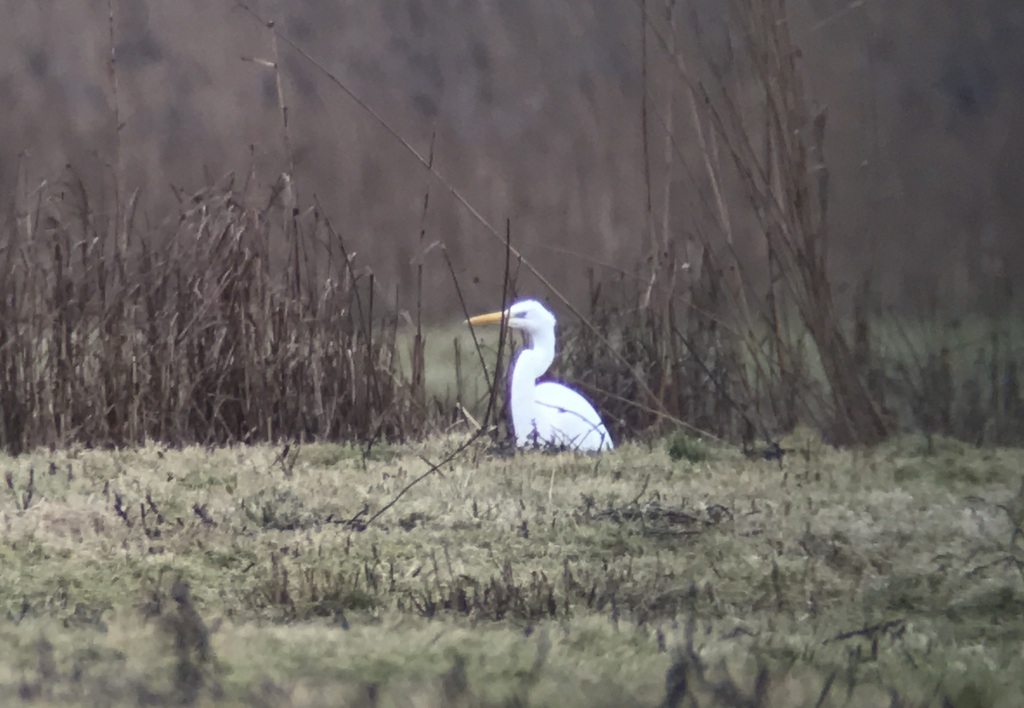
A little flock of Pink-footed Geese flew over calling but as we walked up towards the pines, we spotted another, a lone bird, out on the grass. We could see its dark head and through the scope we got a good look at its pink legs and delicate bill, mostly dark with a narrow pink band around it. A Greylag Goose was nearby for comparison, larger and paler and sporting a large orange carrot for a bill! On the other side of the Drive, four Brent Geese were feeding out on the grazing marsh too.
We had seen a flock of Fieldfares disappearing into the distance from the car as we drove up. We finally relocated them in the fields behind the construction site for the new Orientation Centre & Cafe, out in a grassy field among the molehills, mixed in with a large flock of Starlings. A pair of Stonechats were feeding on the grassy bank nearby.
With the weather now dry, we decided to head out towards the beach and take advantage, in case it should get wet again later. As we made our way through the pines, we could see more Brent Geese together with several Shelduck out on the saltmarsh. It was a bit windier on this side of the trees though and the walk east along the north edge of the pines was rather quiet. We flushed a small charm of Goldfinches from the high tide line along the dunes as we walked.
When we got to the eastern end of the saltmarsh, we stopped to scan. It didn’t take long to find our quarry, as the nine Shorelarks were feeding in their usual spot again today. We walked over and had a lovely view of them scurrying around among the sparse low vegetation. Through the scope, we could see their yellow faces and black bandit masks.
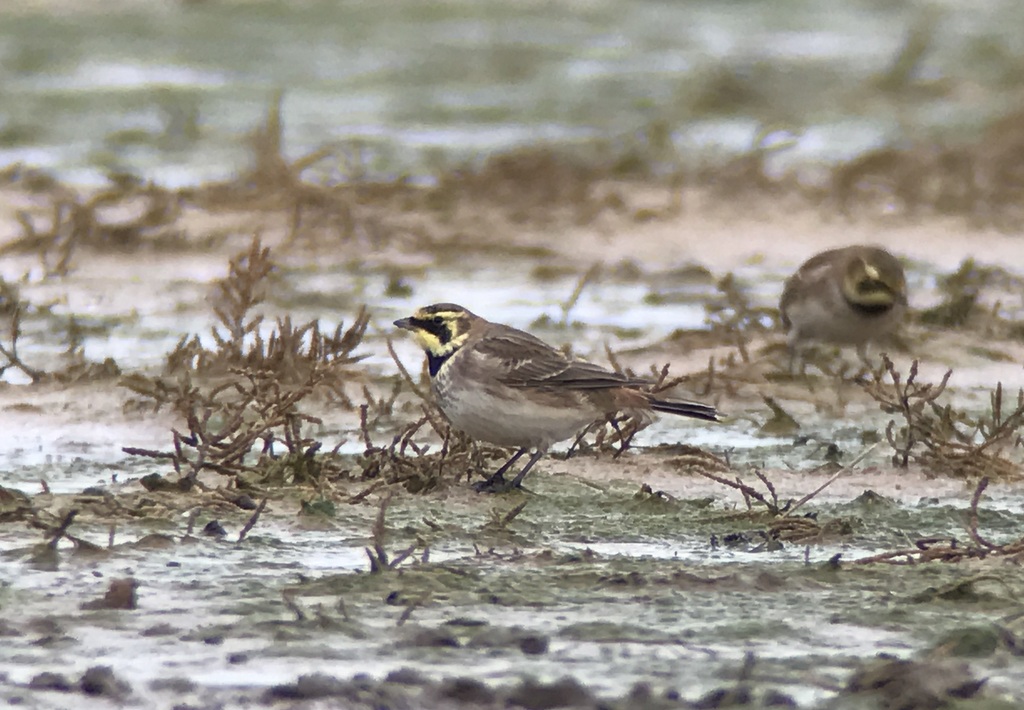
After watching the Shorelarks for a while, we decided to make our way back. The walk was only relieved by a couple of flyover Rock Pipits and a pair of Skylarks which flew up from the saltmarsh as we passed. Back on the other side of the pines, a pair of Egyptian Geese had now joined the four Brent Geese we had seen earlier.
Almost back to the car, we stopped for another look out over the grazing marsh. As we scanned, we noticed a large white bird circling over the trees out in the middle. It wasn’t another egret – it was flying with its neck stretched out in front – it was a Spoonbill! This is the first we have seen back here this year, although they breed here at Holkham and hopefully more will follow soon. It might not have felt much like it today, but spring is on its way now.
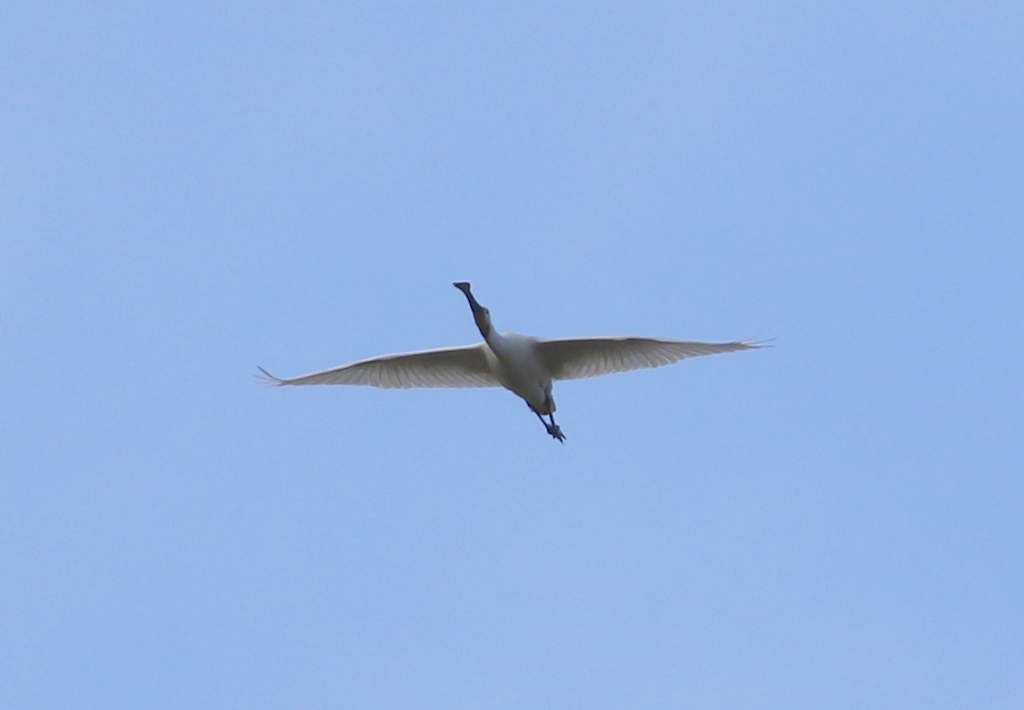
The Spoonbill turned and came straight towards us, flying over Lady Anne’s Drive just a short distance from us and disappearing off east towards Wells. We could see its distinctive spoon-shaped bill as it came overhead. A rather pale Common Buzzard was busy tearing at something it had caught out on the grass but was rather ignored until the Spoonbill had gone. A couple of Marsh Harriers hung in the air over the reeds at the back.
We were planning to make our way west this morning, but we had a quick stop further along the coast road to admire six White-fronted Geese in a grassy meadow with a flock of Greylag. In direct comparison, we could see the White-fronted Geese were much smaller and more delicate, with a smaller pink bill surrounded with white at the base. The adults were also sporting their distinctive black belly bands.
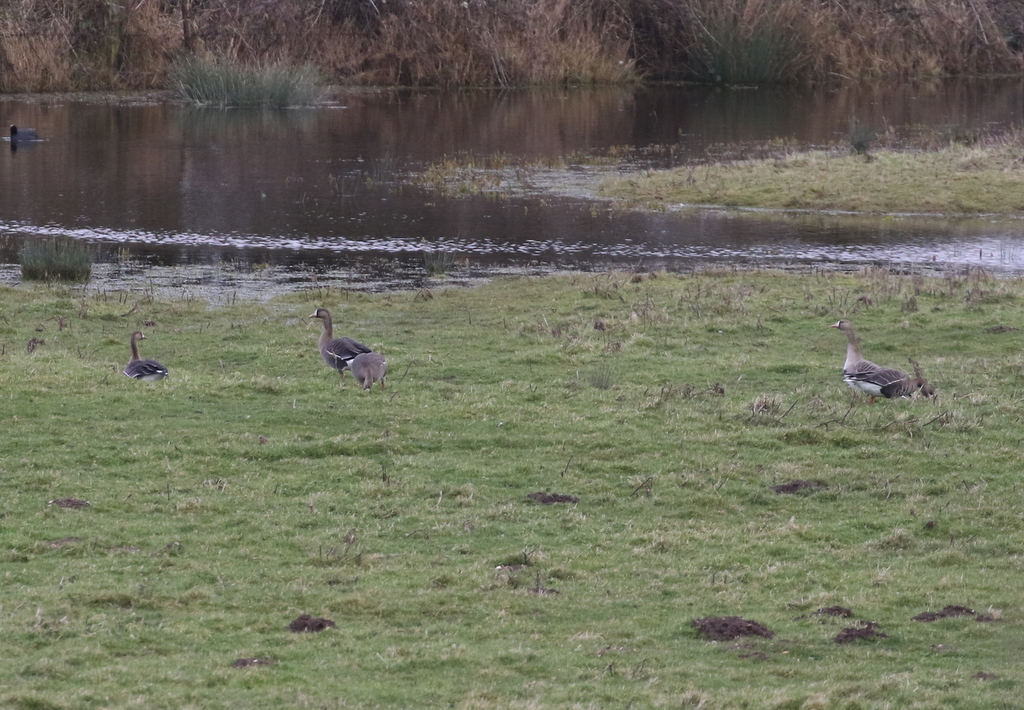
An even whiter Common Buzzard was perched on an old pill box just behind the geese, a striking bird and a regular at this spot. A little further along the road, a couple of hundred Pink-footed Geese were feeding in a stubble field.
Our next diversion off the coast road was at Titchwell, where we turned inland along Chalkpit Lane. There has been a Hooded Crow here, but it is often very elusive. We had a quick scan for it on our way past, but there were several people looking who had not managed to locate it. We did stop to admire a winter wheat field which held at least 20 Brown Hares. On the other side of the road, a bare beet field was chock full of Lapwings and Golden Plovers when you looked closely.
Round at Choseley Drying Barns there was quite a bit of disturbance today, with tractors coming and going and people walking past, and the hedges were quiet. We did stop to look at a Grey Partridge and a Red-legged Partridge feeding side by side, a nice opportunity for comparison.
A little further on, there was much more activity and the hedges were packed with small birds which took off as we approached. They landed again further along, so we rolled up slowly for a closer look. There were loads of Chaffinches and Bramblings in the bushes and we got a great look at some of the latter right next to the car. Then another vehicle came speeding the other way and they all took off again and flew further back.
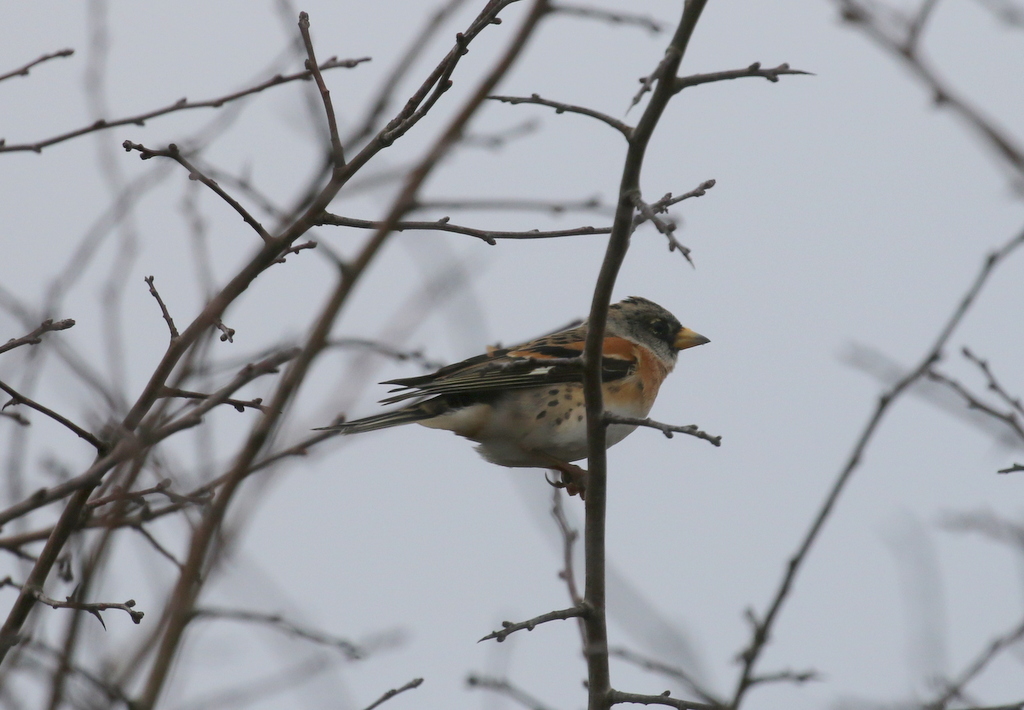
At our next stop, we got out to look at an overgrown grassy field and were immediately greeted with several Skylarks singing out in the middle, another sign that spring is on its way. Then a flock of birds flew over from the other side of the road – another thirty Skylarks all together – and they dropped down into the grass. There are often buntings here too and we found a large flock of them in the hedge at the far corner of the field. There must have been at least 20 Yellowhammers here, including some lovely bright yellow-faced males. Stunning birds!
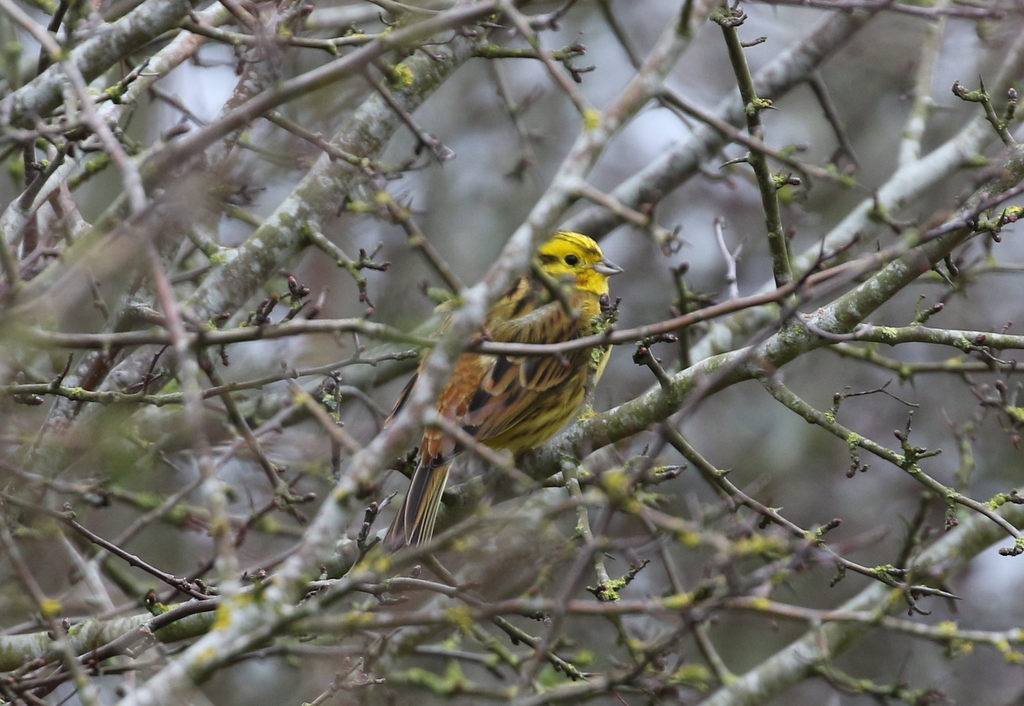
We were still not done with our farmland exploration and a little further still we stopped again by a cover strip on the edge of a field. The hedge alongside was absolutely full of birds – mainly Reed Buntings and Yellowhammers. As we set up the scope for a closer look, 15-20 Tree Sparrows flew out of the hedge by the road and across to join the other birds. We had a great look as several of the Tree Sparrows perched up nicely in the top of the hedge.
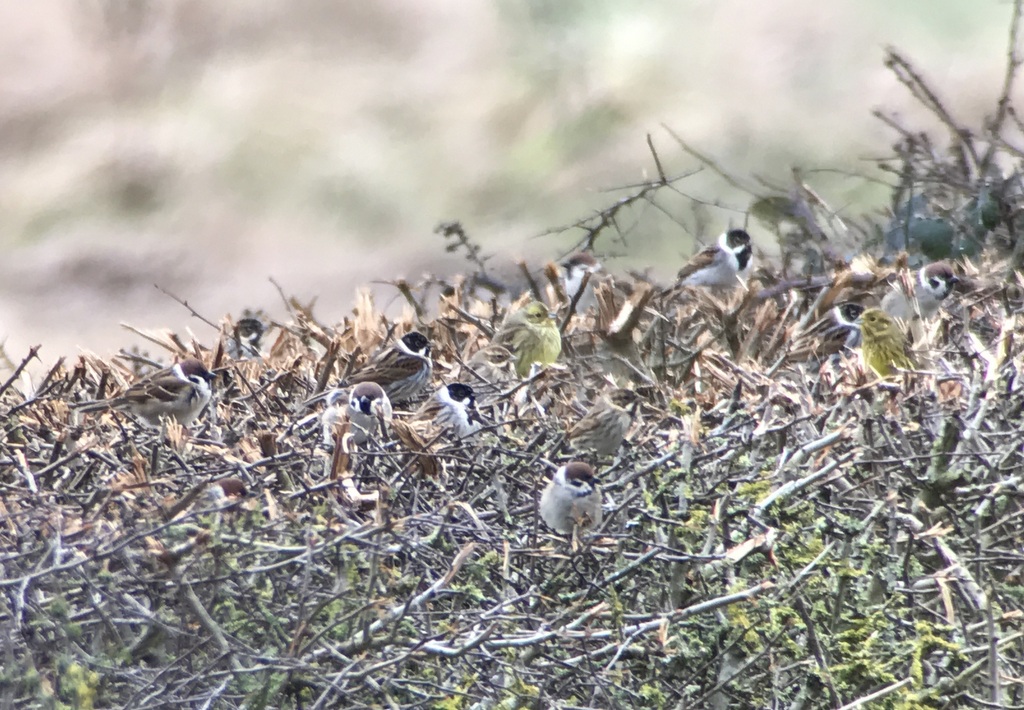
As we made our way back down to the coast, it started to rain again. We had been very fortunate that our morning to this point had been almost completely dry – not what had been forecast! We drove down to Thornham Harbour and had a quick look to see if the Twite were around the car park. There was no sign of them here and we decided not to linger in the rain.
We did pick up a nice selection of waders here. The mud below the old sluice held a couple of Common Redshank, a Curlew and a Black-tailed Godwit. Down in the harbour channel by the boats, the highlight was a single Greenshank feeding down in the water, along with a Grey Plover and a Ringed Plover too on the mud nearby.
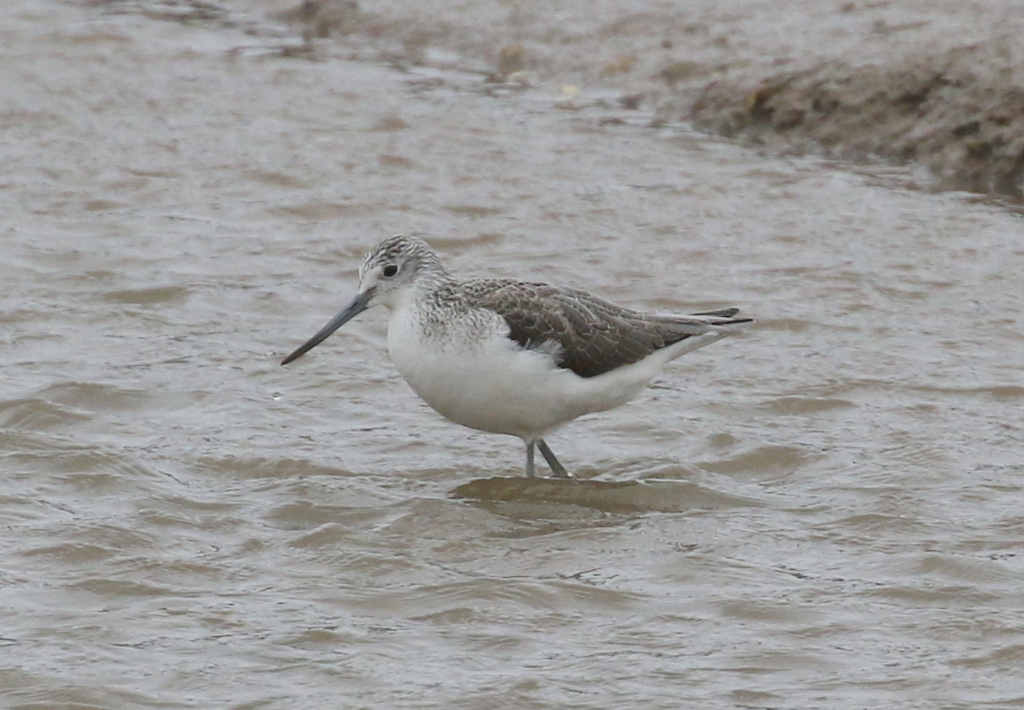
As we started to drive back up the road, a quick scan of the channel behind the old coal barn revealed another wader feeding up to its belly in the water. It was clearly very pale, but was almost swimming and upending at first. When it finally raised its head, we could see its long-needle fine bill, a Spotted Redshank. A Common Redshank walked along behind it on the mud, picking at the surface, providing a nice comparison, particularly of the two closely related species very different feeding techniques.
It had been an action packed morning, so we made our way round to Titchwell for a late lunch while the rain passed over. Over a welcome hot drink at the visitor centre, we scanned the feeders which produced another Brambling and several Greenfinches. Afterwards we headed out onto the reserve.
The wind had picked up as the rain had passed through, so we hurried straight out to Parrinder Hide. Thornham grazing marsh looked very quiet. There were a few ducks on the reedbed pool – mainly Mallard, plus a few Tufted Ducks and three Common Pochard. A Marsh Harrier was hanging in the breeze over the back of the reeds.
Out on the freshmarsh as we walked out to Parrinder Hide, we could see a gathering of Avocets on the edge of one of the islands. We counted thirty today, another increase here in recent days as birds return now ahead of the breeding season.
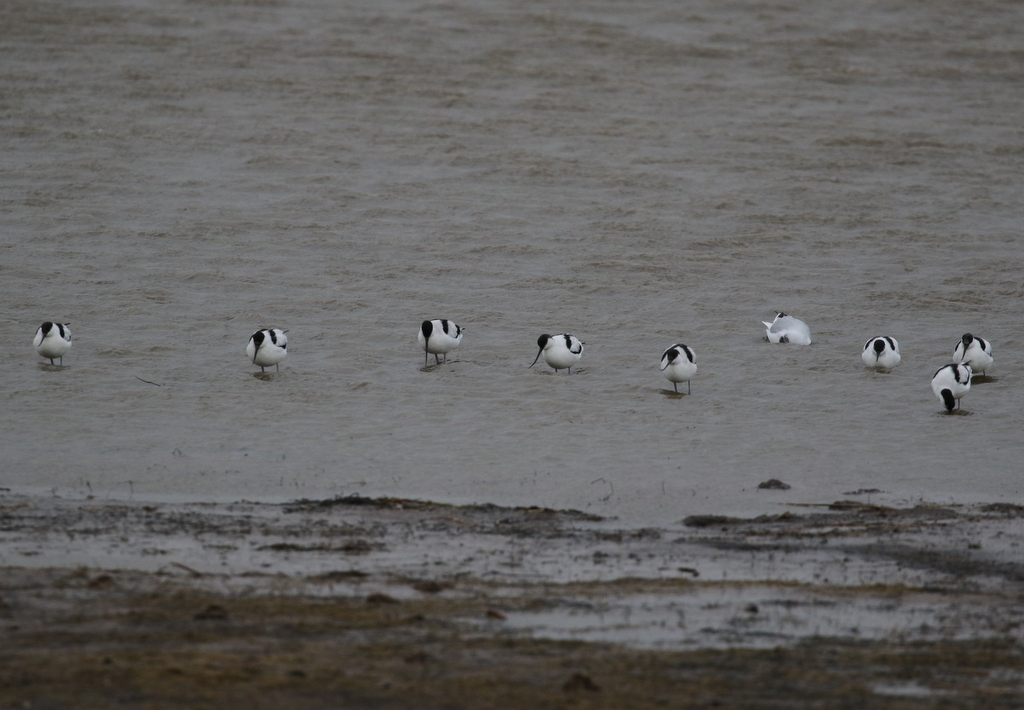
There were a few more waders as we got to Parrinder Hide. A Ringed Plover flew off over the bank towards Volunteer Marsh, but three Dunlin dropped in and started to feed around the edge of one of the islands. Then two Black-tailed Godwits flew in to bathe in front of the hide, flashing their black tails.
Scanning carefully along the edge, where the reeds have been freshly cut, revealed two Common Snipe feeding in the shallow water. They worked their way closer to the hide, until we had scope-filling views of them. They were incredibly well camouflaged against the dead reed stems with their golden-striped plumage, much more appropriately dressed than the Common Snipe we had seen out on the green grass at Holkham earlier.
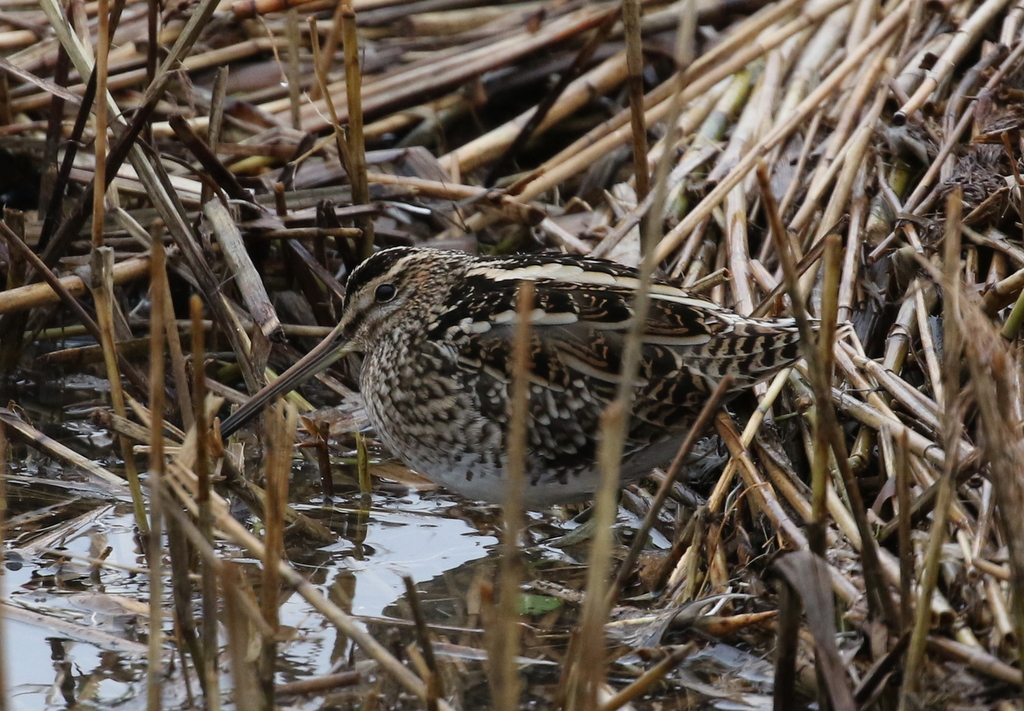
We had also started to scan the cut reeds along the edge for Water Pipits, which like to feed along here. Then one handily flew in and landed out on the edge of one of the bare muddy islands and walked into the water to bathe, which made it much easier to spot! When it flew over to the bank to preen, we then found another Water Pipit creeping around in the cut reeds nearby.
There were a few duck out on the freshmarsh too today, but not as many as recent weeks. There were plenty of Shoveler and Teal, but a careful scan revealed a smart drake Pintail and a pair of Gadwall too. A flock of Brent Geese dropped in for a drink and a bathe briefly before heading back out to the saltmarsh. Gulls were starting to gather on the freshmarsh already, ahead of going to roost. They were mainly Black-headed Gulls but several Common Gulls dropped in to bathe too.
The other side of Parrinder Hide was also very productive for waders. First we spotted a smart Grey Plover just below us, then a Knot appeared out on the vegetation on the mud nearby. There were a couple of Dunlin right in front of the hide too, but then a flock of about twenty more Knot flew in with a couple of Dunlin with them, allowing a nice comparison of the two.
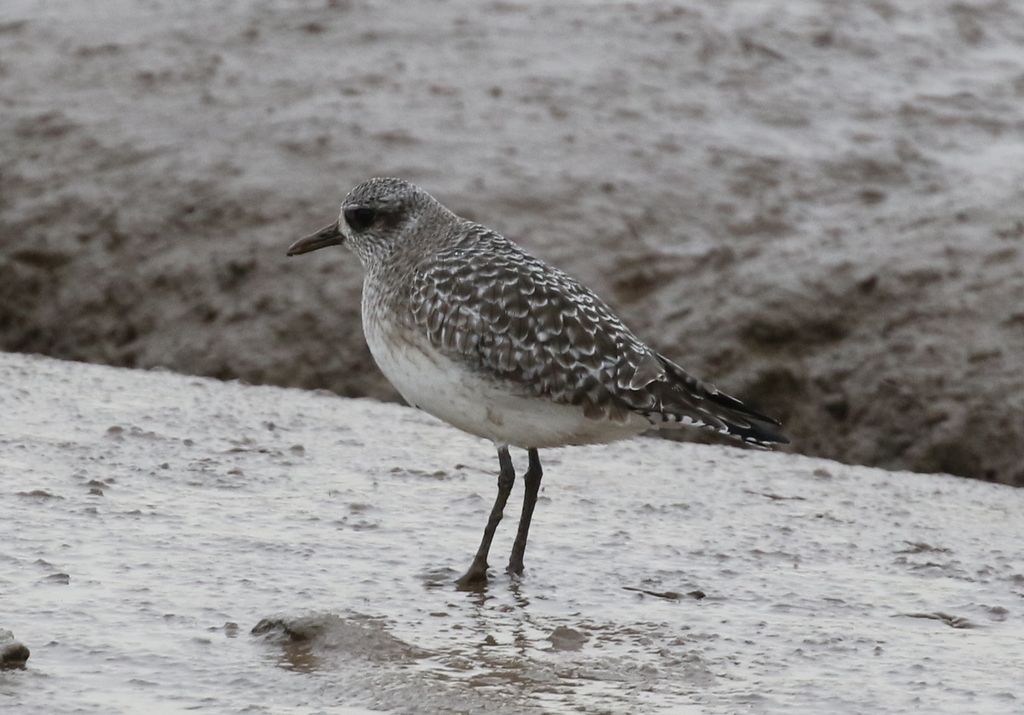
It was cold and windy, and we had somewhere else we wanted to finish the day, so we decided against walking out to the beach and made our way back to the car. As we made our way back east, we turned off inland again. We were quickly rewarded with a Barn Owl which flew along the verge just in front of the car, hunting for several minutes, before turning out across the field as we tried to get ahead of it.

It was rather grey and windy this afternoon, not really Barn Owl weather, but they are probably hungry after several nights of rain in recent days.
There has been a very showy Bittern in some flooded meadows along one of the river valleys near here in recent weeks. It was a bit grey and gloomy when we arrived and we weren’t sure at first whether it would still be here. We almost walked past it, even though it was right out in the open close to the path.
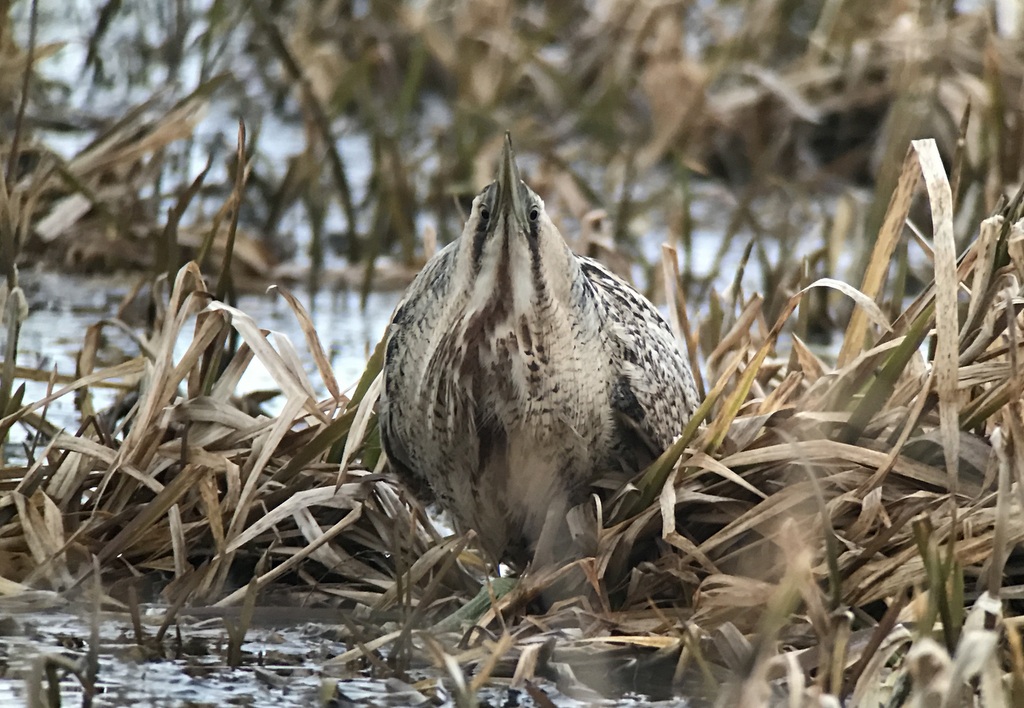
When we realised where the Bittern was trying to hide, we got it in the scope and had a great close-up look at it. It was hunched up and frozen still, pretending it wasn’t there, with its bill pointing up and turned to face us, with its striped neck making it look just like a clump of reeds. Even when you knew where it was, it was still hard to spot, despite being out in an open area with only very sparse vegetation. What a stunning bird!
Eventually we had to tear ourselves away and let the Bittern resume whatever it was up to before we arrived. It was a great bird to end the day, with a Tawny Owl then hooting from the trees as we walked back to the car.
















